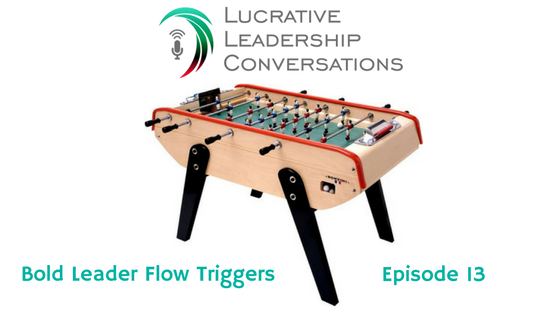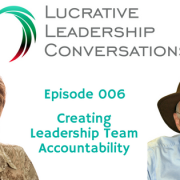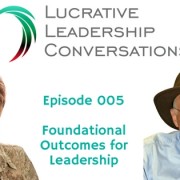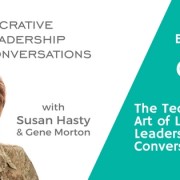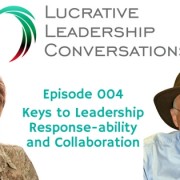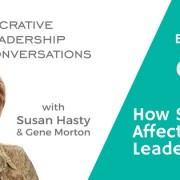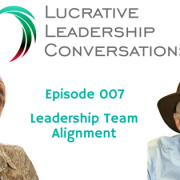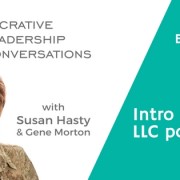013 | BOLD Leader Flow Triggers
Have you ever been “in the zone,” where projects felt almost effortless? If you’ve ever experienced this, you were in a state of Flow. This term was coined by Mihaly Csikszentmihalyi in his seminal work Flow: The Psychology of Optimal Experience. Flow triggers can be a powerful ally for anyone in leadership.
“You know that what you need to do is possible to do, even though difficult, and sense of time disappears. You forget yourself. You feel part of something larger.” —Mihaly Csikszentmihalyi
McKinsey Consulting conducted a 10-year research study where they found that top executives reported being five times more productive when in a state of Flow. If we could increase the time we spend in Flow by 15-20% (by increasing Flow triggers), overall productivity in the workplace would almost double, researchers found.
But what is Flow?
“Flow is an optimal state of consciousness, a peak state where we feel our best and perform our best.” -Steven Kotler
One of the leading voices today in the area of achieving Flow is Steven Kotler, author of “The Rise of Superman: Decoding the Science of Ultimate Human Performance” and “17 Flow Triggers.”
From his bio: STEVEN KOTLER is a New York Times bestselling author, and award-winning journalist. His articles have appeared in over 70 publications, including: New York Times Magazine, Wired, Discover, Popular Science, Outside, GQ, and National Geographic. Kotler is also the co-founder and director of research for the Flow Genome Project, an organization dedicated to decoding ultimate human performance.
In this episode of the Lucrative Leadership Podcast, Gene and I explore several of these Flow Triggers and how the Six Bold Steps of the Leaders First Process can outline a structure to achieve Flow.
Flow Triggers and the Six Bold Steps
While Flow has been proven to be a powerful ally in the world of business leadership, very few leaders understand how to achieve it. The 6 Bold Steps create a structure where Flow triggers are allowed to flourish. Below is a summary of the 6 Bold Steps with the corresponding Flow triggers.
Bold Step #1: Step Up To Responsibility
In Step 1, leaders agree to step up their game and own their personal responsibilities. This requires the hard, often painful, work of examining their beliefs and behaviors. To lead together, leaders have to agree to protect the organization’s best interest, even at the expense of their department.
Flow Triggers achieved in Step #1:
- The Challenge/Skills Ratio (Psychological Trigger)
Flow is achieved when the task or responsibility is slightly beyond your comfort zone or skills. When leaders step up to the responsibility at hand, they must find the balance between tasks which are too difficult (causing anxiety) and those which are too easy (causing boredom).
- A Rich Environment (Environmental Trigger)
Leaders can more easily achieve a Flow state by structuring the environment in which they work. By creating environments that are unpredictable and complex, it can actually work at increasing Flow. How? If you do not know what to expect in your environment, you pay more attention to what is happening next. If we are forced to calculate a lot of information coming toward us quickly, it forces us to be more attuned to the moment.
- Risk (Social Trigger)
Risk means the potential to fail. Creativity increases with a greater risk of failure. When leaders step up to their specific responsibilities, the potential for failure increases, which in turn increases the amount of creativity and innovation.
Bold Step #2: Defining Critical Outcomes
In step 2, they craft a common language, sustainable statements, which we call critical outcomes. Outcomes express the core competencies aligned with the organization’s strategic vision and the customer’s expectations.
Flow Triggers achieved in Step #2:
- Clear Goals (Psychological Trigger)
Clear goals allow our minds to stay focused on the present task. The goal of having clear goals is to “know what you’re doing and why you’re doing it. (Kotler)”
- Shared, Clear Goals (Social Trigger)
Flow happens only when teams are 100% clear on their shared goals. Shared goals have a dual purpose: Open for creativity, yet focused enough to achieve a solution.
- Familiarity (Social Trigger)
Teams can more easily achieve Flow when they use common terms and language. Each member of the team must work from the same knowledge base to avoid confusion. Confusion kills Flow. When team members are on the same page, it leads to momentum. Momentum leads to Flow. Step #2, defining outcomes, is critical in getting everyone headed in the same direction.
Bold Step #3: Granting and Accepting Accountability
In Step 3, leaders negotiate who, on the leadership team, will have the primary accountability for designing and executing each outcome.
Flow Triggers achieved in Step #3:
- High Consequences (Environmental Trigger)
Risk and survival are positive factors when it comes to achieving Flow. When danger is involved, our sense are heightened. This response works in favor of finding a Flow experience. By granting and accepting accountability (Bold Step 3), an element of danger is created.
- Sense of Control (Social Trigger)
When accountability is granted, the leader is also granting a sense of control to that team member. When a team member accepts accountability, they are stepping into the control they have over a critical outcome. Accountability and a sense of control encourages both autonomy and competence.
Bold Step #4: Integrate Roles
In step 4, – Working together, the leaders begin an intuitive process to collaborate and design a structure they are able to support and explain to others. Leaders decide their roles for each outcome and agree how and when communications occur that define future and past actions and decisions. They create the first drafts of the reporting structure.
Flow Triggers achieved in Step #4:
- Intensely Focused (Psychological Trigger)
Flow is the direct result of intense concentration over a long period of time. Focused attention, as opposed to multi-tasking, leads to high levels of Flow. Flow requires one singular area of deep focus. Once a leader’s role has been determined, they are able to give the full attention to this area.
- Equal Participation (Social Trigger)
Flow is best achieved when team members share equal roles in the project. Team members need to have a similar level of skills. You don’t want to mix the “professionals” with the “amateurs.” Step 4, integrating roles, helps in getting the right people at the table and achieving Flow within the team.
Bold Step #5: Designing The Strategic Reporting Structure
In step 5, engaging the entire organization in ongoing discussions improves the design. Conversations serve to clarify and reinforce the meaning of the outcomes that make the organization sustainable.
Flow Triggers achieved in Step #5:
- Serious Concentration (Social Trigger)
An effective reporting structure and feedback loops (Step 5) helps to focus team members on what is important and maintaining concentration on the project. This type of concentration can be seen in the sporting world, where it is necessary for the demands of a fast paced sport. Like a time out during a stressful game, constant feedback loops can help keep the team concentrated at the task at hand.
- Good Communication (Social Trigger)
According to Kotler, “nothing blocks flow more than ignoring or negating a group member.” When leaders spend quality time on designing an effective reporting structure, good communication can be achieved among team members, leading to Flow.
Bold Step #6: Tracking Performance
In Step 6, tracking performance is used to discover the best practices for the delivery of each outcome to the customer.
Flow Triggers achieved in Step #6:
- Immediate Feedback (Psychological Trigger)
Immediate feedback is related to defining clear goals, according to Kotler. In the Leaders First process, creating a successful performance tracking system (step 6) ties all the way back to defining the organization’s critical outcomes (step 2). By providing opportunities for immediate feedback, it focuses attention on goals and outcomes, leading to Flow.
Conclusion:
Flow should be the goal of any leader who wants to achieve extraordinary results in business and in life. Flow is the roadmap to discovering greater clarity, focus, accountability, and commitment in your organization. Kotler’s 17 triggers are an excellent way to achieve Flow in the workplace. However, leaders may find the implementation process difficult. The 6 Bold Steps of the Leaders First process allows leaders to create a structured framework in order to implement these Flow triggers into a team environment.
To learn more about the 6 Bold Steps, the Leaders First process, or about the BOLD Leader Flow Project, contact Susan Hasty to schedule your appointment.
Resources & Links:
http://www.slideshare.net/StevenKotler/17-flow-triggers
http://www.flowgenomeproject.com/
https://www.ted.com/talks/mihaly_csikszentmihalyi_on_flow
Leaders First: Six Bold Steps to Sustain Breakthroughs in Construction by Gene Morton
About the Hosts:
SUSAN HASTY
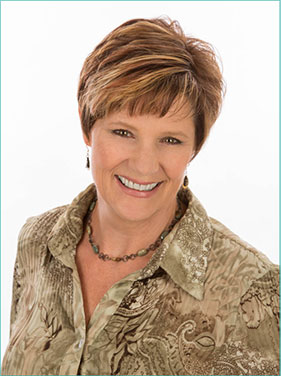
Susan Hasty is the CEO of 360 Profit Masters and the host of the Lucrative Leadership Conversations podcast. Susan considers herself a “maverick leader” on a mission to inspire and equip leaders to ignite their leadership genius. Susan co-founded 7 business ventures over the last 35 years. Her passion is helping business owners and CEOs improve their own clarity, focus and commitment to build more sustainable organizations empowered to make economic liberty a reality. She is certified in Neurolinguistic Programming and is a Strategic HR Business Partner by the Human Capital Institute. She is a member of the Marshall Goldsmith Stakeholder Centered Coaching Network of International Leadership coaches.
Ready to your business more profitable? Schedule a free call with Susan Hasty
GENE MORTON
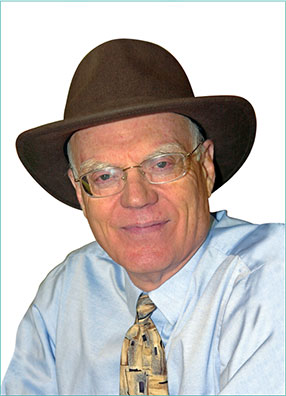 Gene Morton is an organizational psychologist based out of Colorado. He is also an award winning author of the book, Leaders First: Six Bold Steps to Sustain Breakthroughs in Construction. Over the past 40 years, Gene has consulted on more than 100 projects in 85 organizations with leader groups engaged in complex mergers, reorganizations, leadership turnarounds, and system redesigns.
Gene Morton is an organizational psychologist based out of Colorado. He is also an award winning author of the book, Leaders First: Six Bold Steps to Sustain Breakthroughs in Construction. Over the past 40 years, Gene has consulted on more than 100 projects in 85 organizations with leader groups engaged in complex mergers, reorganizations, leadership turnarounds, and system redesigns.
He developed the Leaders First Alignment Process to provide leadership teams the model they need to gain clarity as the organization evolves. His passion is mastering the complexities of organized and collaborative leadership.
Connect With Us
Subscribe to itunes Subscribe to stitcher Subscribe to Google Play
Straight forward leadership advice
Learn a simpler, more practical approach to building your leadership team strength... Delivered straight to your inbox!

